Elements r2r Stage2 4
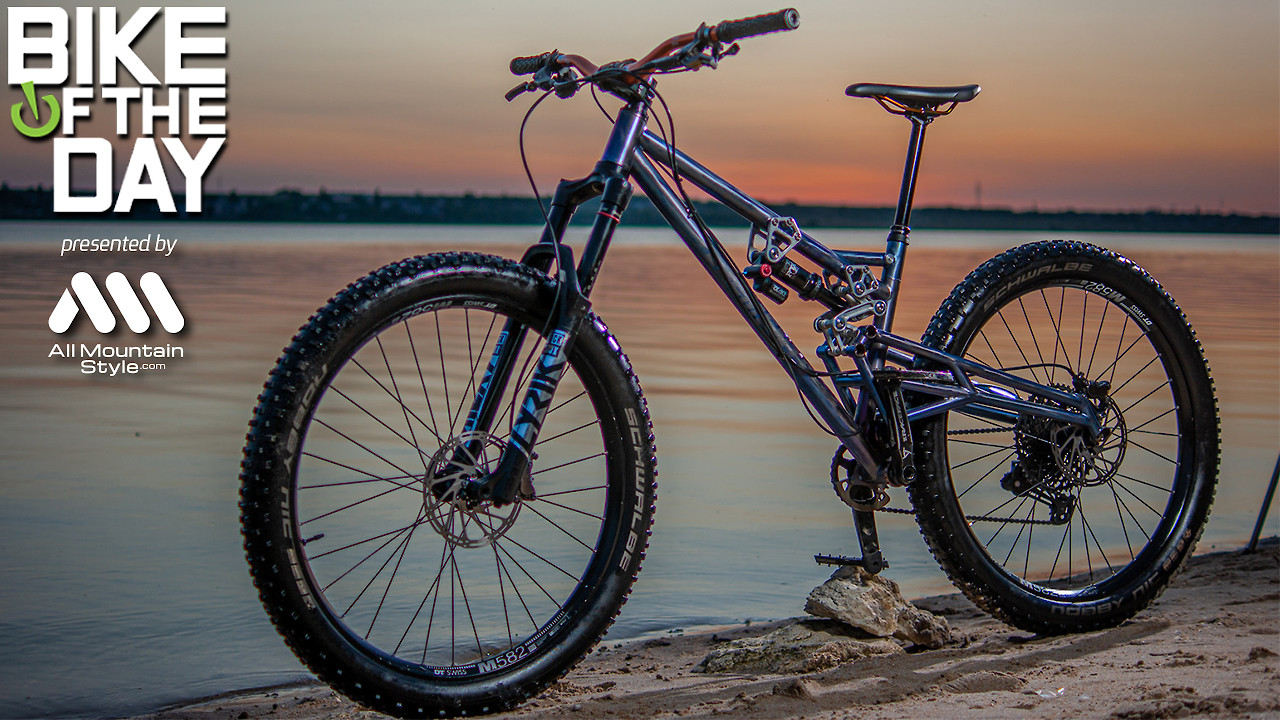
Parts
General Info
Custom frame full ti - grade 9
anodized
Long slack and low
Frame geometry in size m
Seatpost Height (mm) 385
ETT (mm) 580
Steering tube height 100mm
chainstay Length 420-435mm
bottom bracket Height 335mm
wheelBase (mm) 1206-1221mm
Steering tube angle 64
Seatpost Angle 79
Bike specs
27.5+ or 29 wheels
150-160mm 29er fork
140mm-145mm rear travel depends on chainstay settings
video with first linkage https://coub.com/view/2f88tu
What will happen if you develop a new suspension based on the requirements for the result?
Last year imbued with the paradigm of Long slack and low
A single-pivot aluminum test frame was made with some part of the solutions that switched to a new, titanium version.
Riding on different bikes before, there were pros and cons in each of the frames, that were between me and the trail.
So, a number of design features that were initially fundamental at the beginning of the project:
1) Raised feathers give you a little more room with the transmission, in my opinion they are much more convenient for maintenance, and also allow you to make a frame with a shorter rear triangle.
2) single-pivot : of all the frames that were used, FSR VPP and course one single-pivot – I chose it for short-stroke suspension are most pleasing when riding.
3) Of course, Long slack and low is different for everyone, but for me it is necessarily a low stand over, a sharp steering angle, the most acute angle of the seatpost, and a long reach. A short seat tube to use with longer dropper even in the m-size frame.
4) Mud gaps are worth mentioning, because often the suspension, clogged with mud, spoiled the impression of riding, as well as the laying of hydrolines and cables with minimal bending.
Personal wishes that are not justified by current trends are short chainstay, or rather say the ability to have short chainstay.
On the first test frame, the main pivot was at higher position giving a lot of anti-squat (much more than 100 percent) and as a result had a slightly high pedalkick.
In climbs, the suspension with such an anti-squat gets closer to the hardtail, even in the open shock mode.
A huge amount of simulation in Linkage (thanks to these guys you can make your dream) allowed to change the location of the pivot point.
In the current version, the anti-squat at the sag point is about 100 percent, and it grows from large to small cogs.
And although in theory this reduces efficiency, on the other hand traction on the climb is more important. And the compression flag still allows you to get a hardtail on absolutely flat climebs.
Here's what the design phase did
2 options for the length of the chainstay on one frame - 420 and 435mm, all you need to change is different derailleur hangers.
83mm bottom bracket width and 150x12 rear hub, to ensure compatibility with wheels up to 27.5 x 3 and adequate mud gaps
Based on the experience of the first single pivot prototype as well as the experience of using single pivot frames, there was a clear understanding of what leverage chart I wanted, and I realized that I was ready to sacrifice simplicity in order to reduce the unwanted load on the shock (which a single pivot without additional links always has due to the bending of the whole constructions at work) ....
The main pivot is the Bsa30 bottom bracket , with large bearings, easy replacement, excellent dirt protection.
All other joints and bearings placed high and do not receive large quantities of dirt and fluids due to their location.
The pivot of the rear triangle pulls, but does not push( which is also important) a mini link that sets the leverage curve, which is almost linear in the first half of the stroke and has a very strong progression in the second half.
Why so? After all, we have shock absorbers with their bottom out systems, changes in the volume of cameras and even springs with progression ... why?
In my opinion, solving the problem with links is much more logical,
After all, the most linear shock absorber is simpler, which means it is more reliable.
In addition, the progressive suspension solves several issues at once,
First of all, this is of course bottom-out resistance
Secondly, this is the sensitivity at the beginning of the stroke, since it is possible to use a much lower pressure due to the bottom-out thru leverage of the suspension.
Thirdly, in addition to the progression at the end of the turn, we get both increasing compression and a slower rebound on the biggest suspension moves.
At the beginning of the move, we have a minimum of compression and a faster rebound, which will undoubtedly again affect the sensitivity.
The first test prototype of the new frame weighed 4kg
The second is already 3.5 ....
The second with updated links and titanium fasteners - 3 kg + -
In my opinion for a titanium frame, with 10 bearings in the suspension, this is very good.
Links where rotation points are located – removable
The shock axle mounting links allow the use of 2 sizes of shock just rotating them 200x57 and 205x57.5 trunnion mount.
This allows you to make changes to the geometry and suspension work without making a new frame, and also greatly simplifies maintenance.
The ofset seat tube - allows you to solve the problem of the suspension and clearances with short feathers.
The stiffening of the rear triangle is in front of the seatpost tube, which also leaves more room for mud gaps.
Why is titanium not aluminum? Not cromo steel?.
Everything is just titanium lighter than cromo steel.
Does not rust (and therefore does not need to be painted)
It is not subject to the accumulation of fatigue.
Does not require heat treatment after welding
Unlike aluminum, the frame can use pipes of smaller diameter with the same stiffness, which gives us more room for design and cleaner look.
Well then what? with the main technical part we are done let's dilute it with prototype pictures and suspension charts
And behind the graphs are several pictures of prototypes which, after modeling in 3D, were rejected
Photos of the intermediate final of the project, which was tested in half a year for 2 copies, in particular in a 3-week trip through the mountains with a visit to 4 bike parks.
The results of riding are generally unambiguous, all the tasks assigned during the design are completed.
Due to modern geometry, a more obtuse seatpost angle and a sufficiently high anti-squat make the suspension very effective in climbing.
Short chainstay in 420mm mode in a compartment with a long front triangle make the bike quite fun and playful, but still the reach and steering angle leave a lot of stability on descends.
A low bottom bracket is also important and naturally adds stability, but it makes you think more about the position of the pedals when cornering and on rock sections.
The progressive suspension delivers only positive emotions, soft and bottomless for me that’s all I can want ...
As an owner, I am 100% satisfied and, probably, this is the first year from all the years of my riding, when I do not think about replacing the frame or any progress in this direction.
Custom frame full ti - grade 9
anodized
Long slack and low
Frame geometry in size m
Seatpost Height (mm) 385
ETT (mm) 580
Steering tube height 100mm
chainstay Length 420-435mm
bottom bracket Height 335mm
wheelBase (mm) 1206-1221mm
Steering tube angle 64
Seatpost Angle 79
Bike specs
27.5+ or 29 wheels
150-160mm 29er fork
140mm-145mm rear travel depends on chainstay settings
video with first linkage https://coub.com/view/2f88tu
What will happen if you develop a new suspension based on the requirements for the result?
Last year imbued with the paradigm of Long slack and low
A single-pivot aluminum test frame was made with some part of the solutions that switched to a new, titanium version.
Riding on different bikes before, there were pros and cons in each of the frames, that were between me and the trail.
So, a number of design features that were initially fundamental at the beginning of the project:
1) Raised feathers give you a little more room with the transmission, in my opinion they are much more convenient for maintenance, and also allow you to make a frame with a shorter rear triangle.
2) single-pivot : of all the frames that were used, FSR VPP and course one single-pivot – I chose it for short-stroke suspension are most pleasing when riding.
3) Of course, Long slack and low is different for everyone, but for me it is necessarily a low stand over, a sharp steering angle, the most acute angle of the seatpost, and a long reach. A short seat tube to use with longer dropper even in the m-size frame.
4) Mud gaps are worth mentioning, because often the suspension, clogged with mud, spoiled the impression of riding, as well as the laying of hydrolines and cables with minimal bending.
Personal wishes that are not justified by current trends are short chainstay, or rather say the ability to have short chainstay.
On the first test frame, the main pivot was at higher position giving a lot of anti-squat (much more than 100 percent) and as a result had a slightly high pedalkick.
In climbs, the suspension with such an anti-squat gets closer to the hardtail, even in the open shock mode.
A huge amount of simulation in Linkage (thanks to these guys you can make your dream) allowed to change the location of the pivot point.
In the current version, the anti-squat at the sag point is about 100 percent, and it grows from large to small cogs.
And although in theory this reduces efficiency, on the other hand traction on the climb is more important. And the compression flag still allows you to get a hardtail on absolutely flat climebs.
Here's what the design phase did
2 options for the length of the chainstay on one frame - 420 and 435mm, all you need to change is different derailleur hangers.
83mm bottom bracket width and 150x12 rear hub, to ensure compatibility with wheels up to 27.5 x 3 and adequate mud gaps
Based on the experience of the first single pivot prototype as well as the experience of using single pivot frames, there was a clear understanding of what leverage chart I wanted, and I realized that I was ready to sacrifice simplicity in order to reduce the unwanted load on the shock (which a single pivot without additional links always has due to the bending of the whole constructions at work) ....
The main pivot is the Bsa30 bottom bracket , with large bearings, easy replacement, excellent dirt protection.
All other joints and bearings placed high and do not receive large quantities of dirt and fluids due to their location.
The pivot of the rear triangle pulls, but does not push( which is also important) a mini link that sets the leverage curve, which is almost linear in the first half of the stroke and has a very strong progression in the second half.
Why so? After all, we have shock absorbers with their bottom out systems, changes in the volume of cameras and even springs with progression ... why?
In my opinion, solving the problem with links is much more logical,
After all, the most linear shock absorber is simpler, which means it is more reliable.
In addition, the progressive suspension solves several issues at once,
First of all, this is of course bottom-out resistance
Secondly, this is the sensitivity at the beginning of the stroke, since it is possible to use a much lower pressure due to the bottom-out thru leverage of the suspension.
Thirdly, in addition to the progression at the end of the turn, we get both increasing compression and a slower rebound on the biggest suspension moves.
At the beginning of the move, we have a minimum of compression and a faster rebound, which will undoubtedly again affect the sensitivity.
The first test prototype of the new frame weighed 4kg
The second is already 3.5 ....
The second with updated links and titanium fasteners - 3 kg + -
In my opinion for a titanium frame, with 10 bearings in the suspension, this is very good.
Links where rotation points are located – removable
The shock axle mounting links allow the use of 2 sizes of shock just rotating them 200x57 and 205x57.5 trunnion mount.
This allows you to make changes to the geometry and suspension work without making a new frame, and also greatly simplifies maintenance.
The ofset seat tube - allows you to solve the problem of the suspension and clearances with short feathers.
The stiffening of the rear triangle is in front of the seatpost tube, which also leaves more room for mud gaps.
Why is titanium not aluminum? Not cromo steel?.
Everything is just titanium lighter than cromo steel.
Does not rust (and therefore does not need to be painted)
It is not subject to the accumulation of fatigue.
Does not require heat treatment after welding
Unlike aluminum, the frame can use pipes of smaller diameter with the same stiffness, which gives us more room for design and cleaner look.
Well then what? with the main technical part we are done let's dilute it with prototype pictures and suspension charts
And behind the graphs are several pictures of prototypes which, after modeling in 3D, were rejected
Photos of the intermediate final of the project, which was tested in half a year for 2 copies, in particular in a 3-week trip through the mountains with a visit to 4 bike parks.
The results of riding are generally unambiguous, all the tasks assigned during the design are completed.
Due to modern geometry, a more obtuse seatpost angle and a sufficiently high anti-squat make the suspension very effective in climbing.
Short chainstay in 420mm mode in a compartment with a long front triangle make the bike quite fun and playful, but still the reach and steering angle leave a lot of stability on descends.
A low bottom bracket is also important and naturally adds stability, but it makes you think more about the position of the pedals when cornering and on rock sections.
The progressive suspension delivers only positive emotions, soft and bottomless for me that’s all I can want ...
As an owner, I am 100% satisfied and, probably, this is the first year from all the years of my riding, when I do not think about replacing the frame or any progress in this direction.
More Bike Checks
Nox Startrack DH 9.5 Witch Marzocchi SuperMonster
oskiosa123
24 Bicycles Po#n King with Marzocchi Shiver DC 2002
retro_freeride









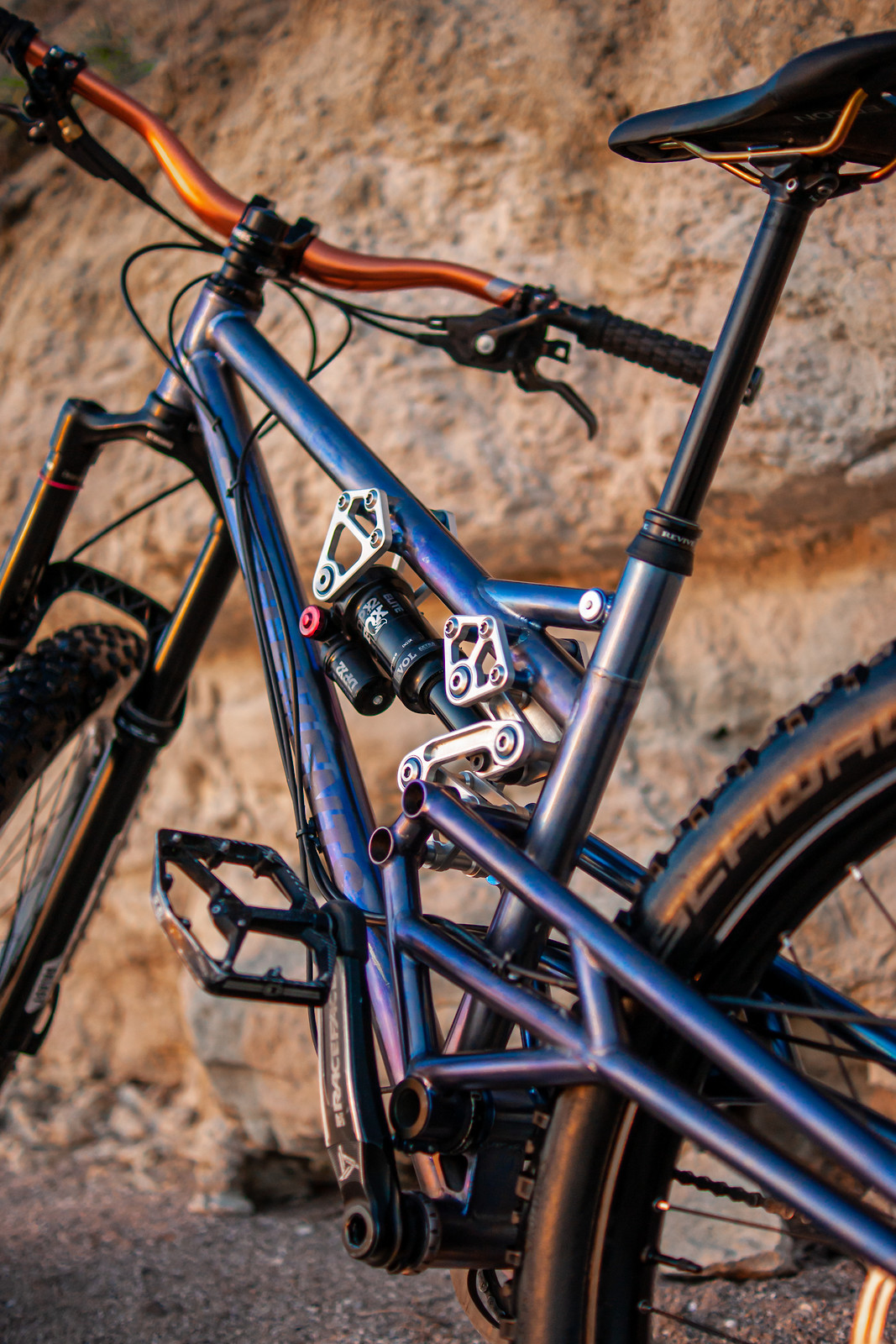
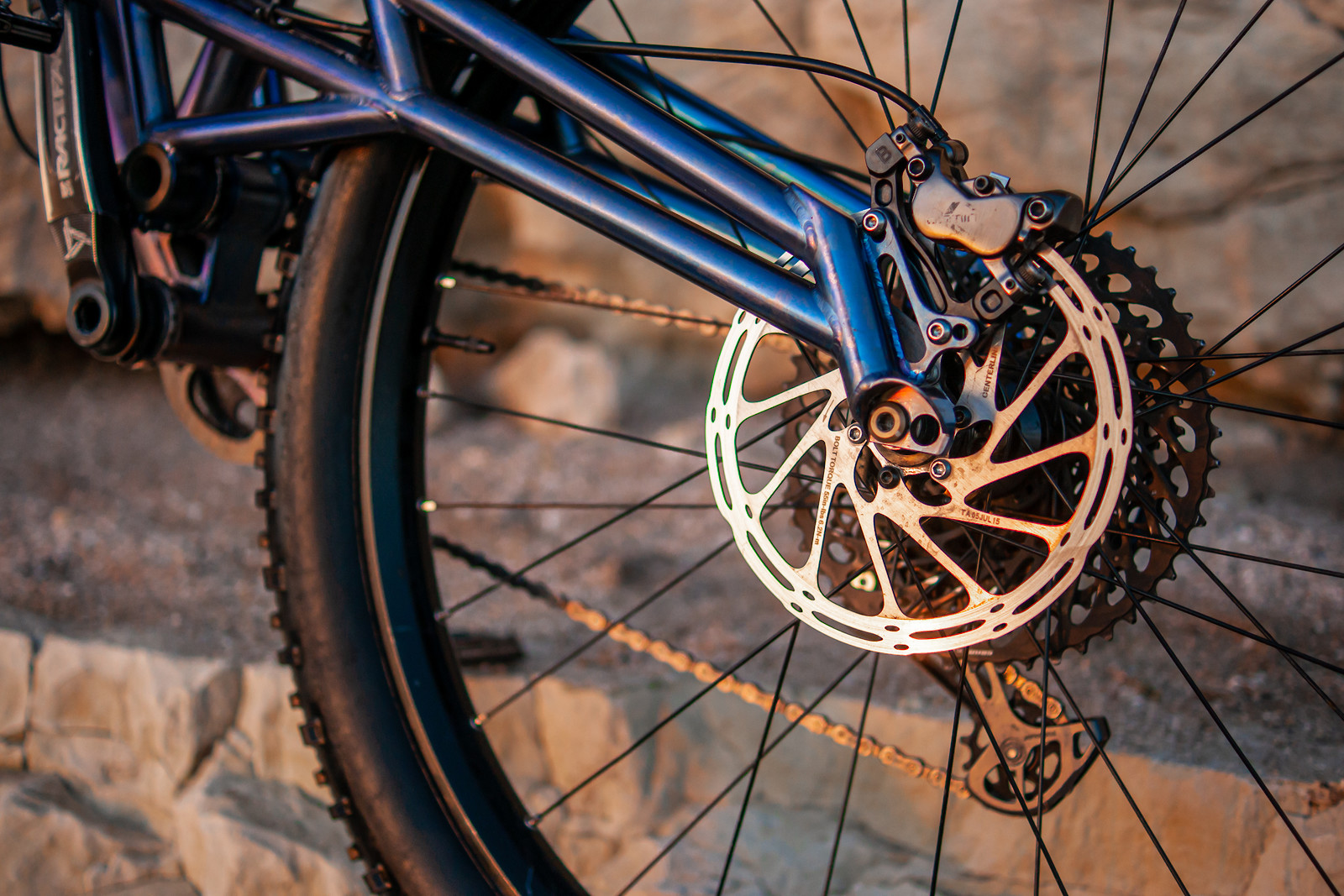
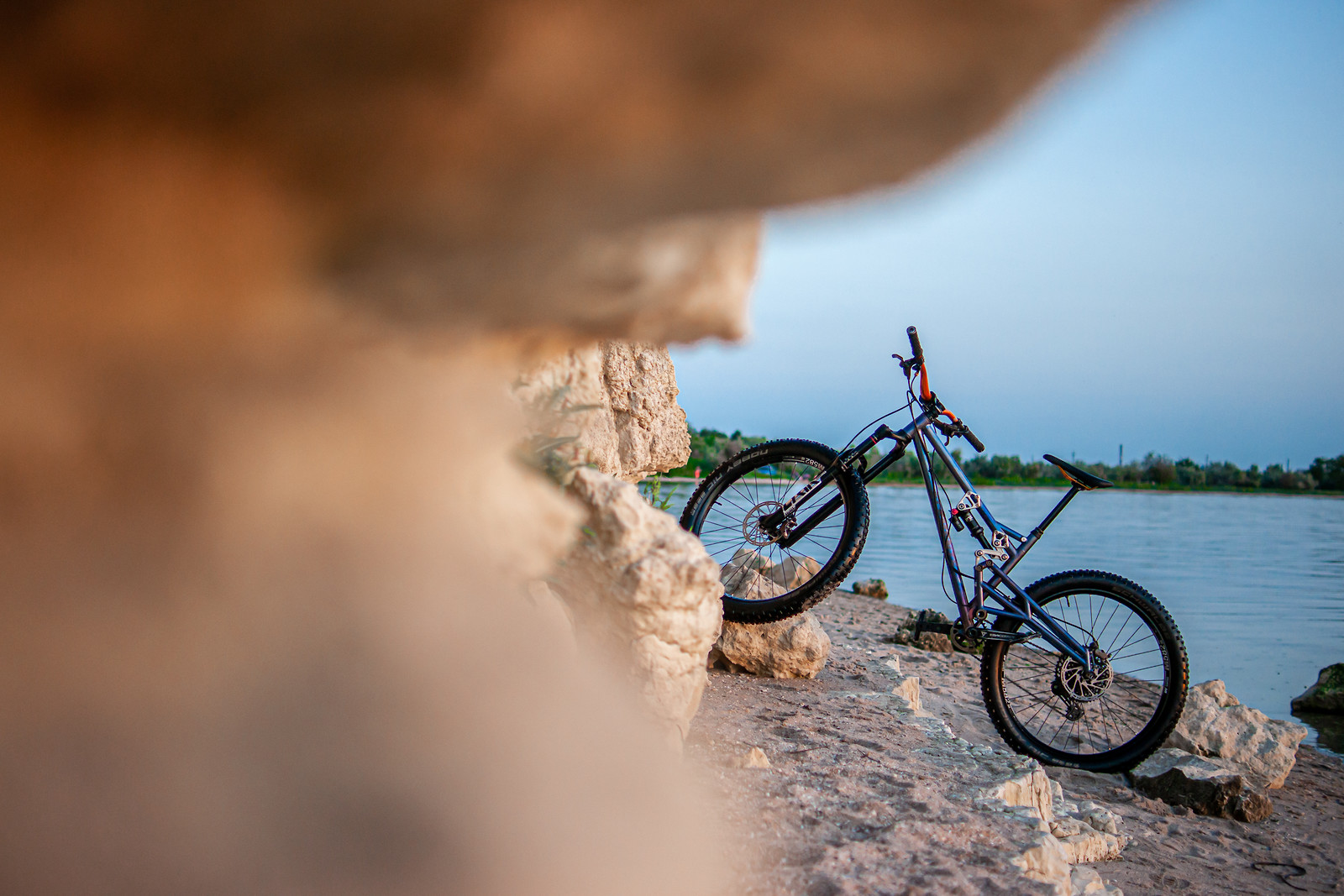

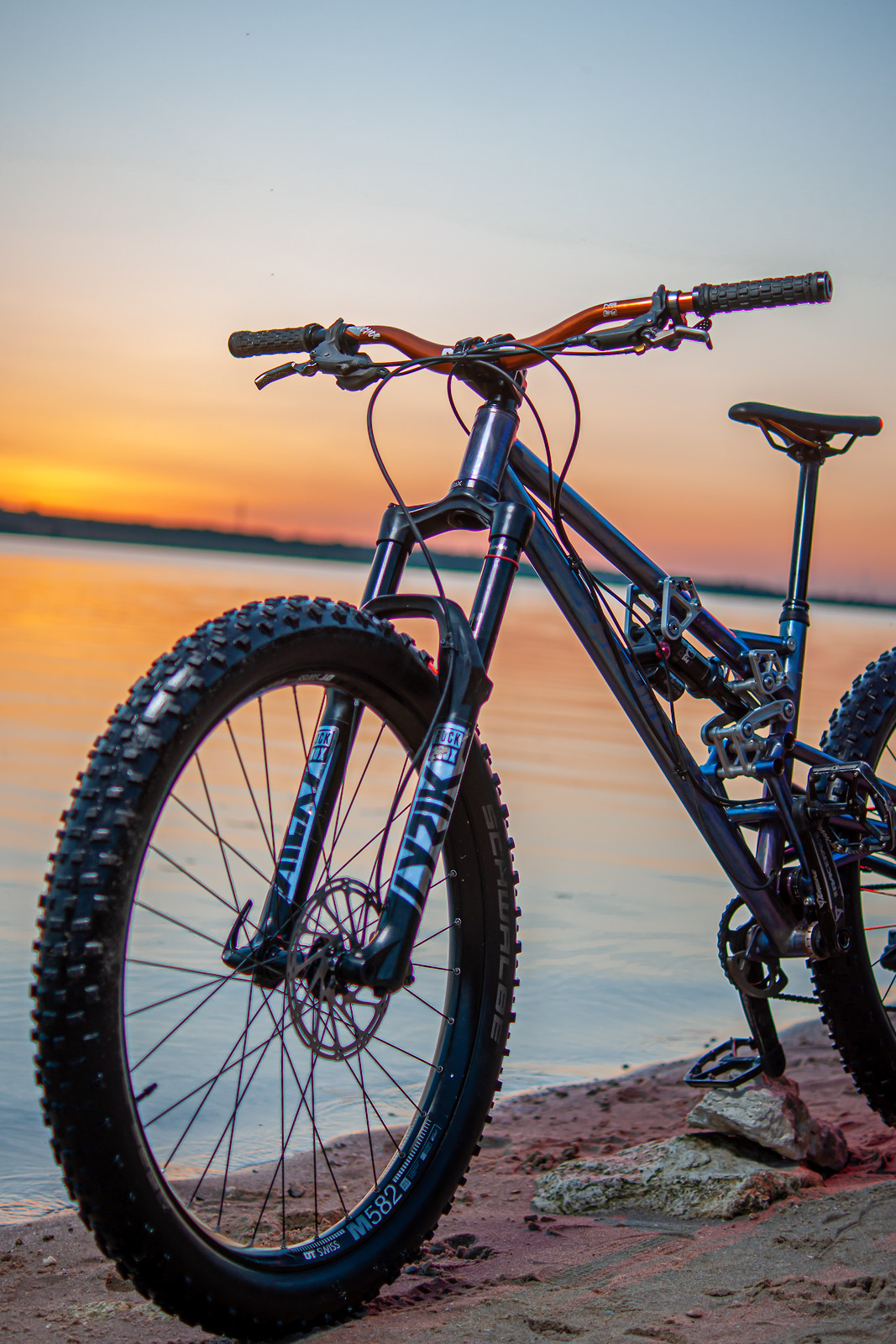
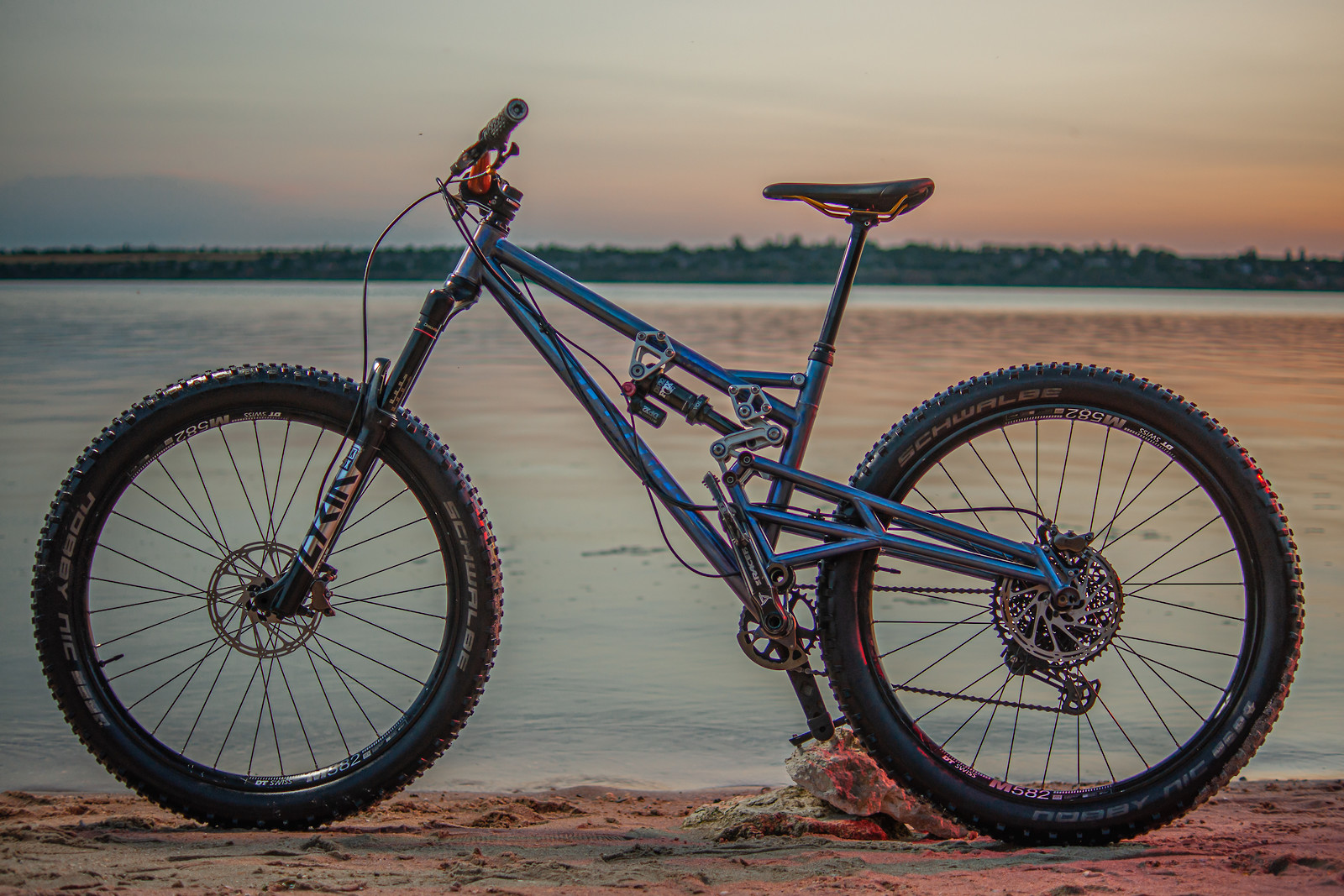




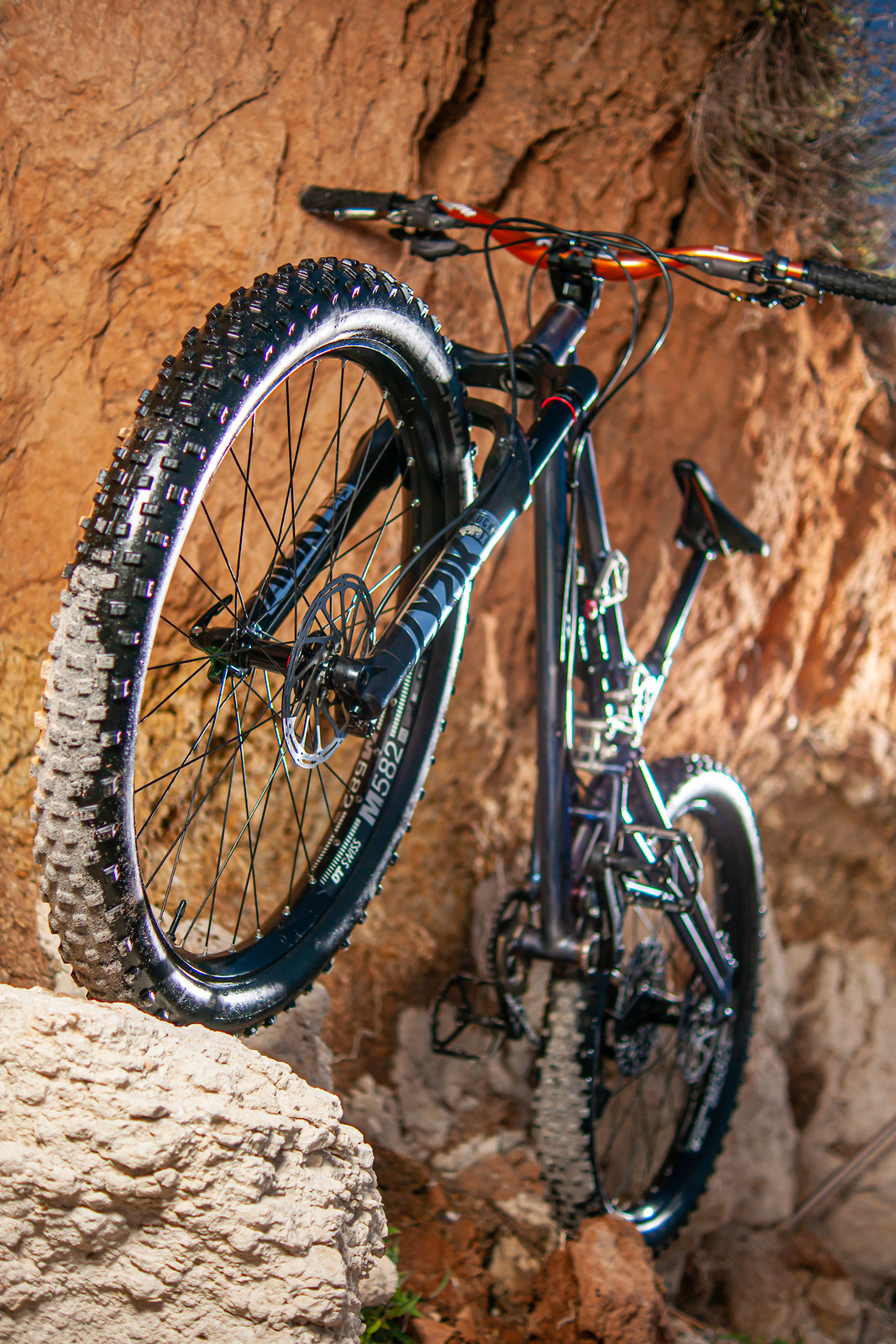
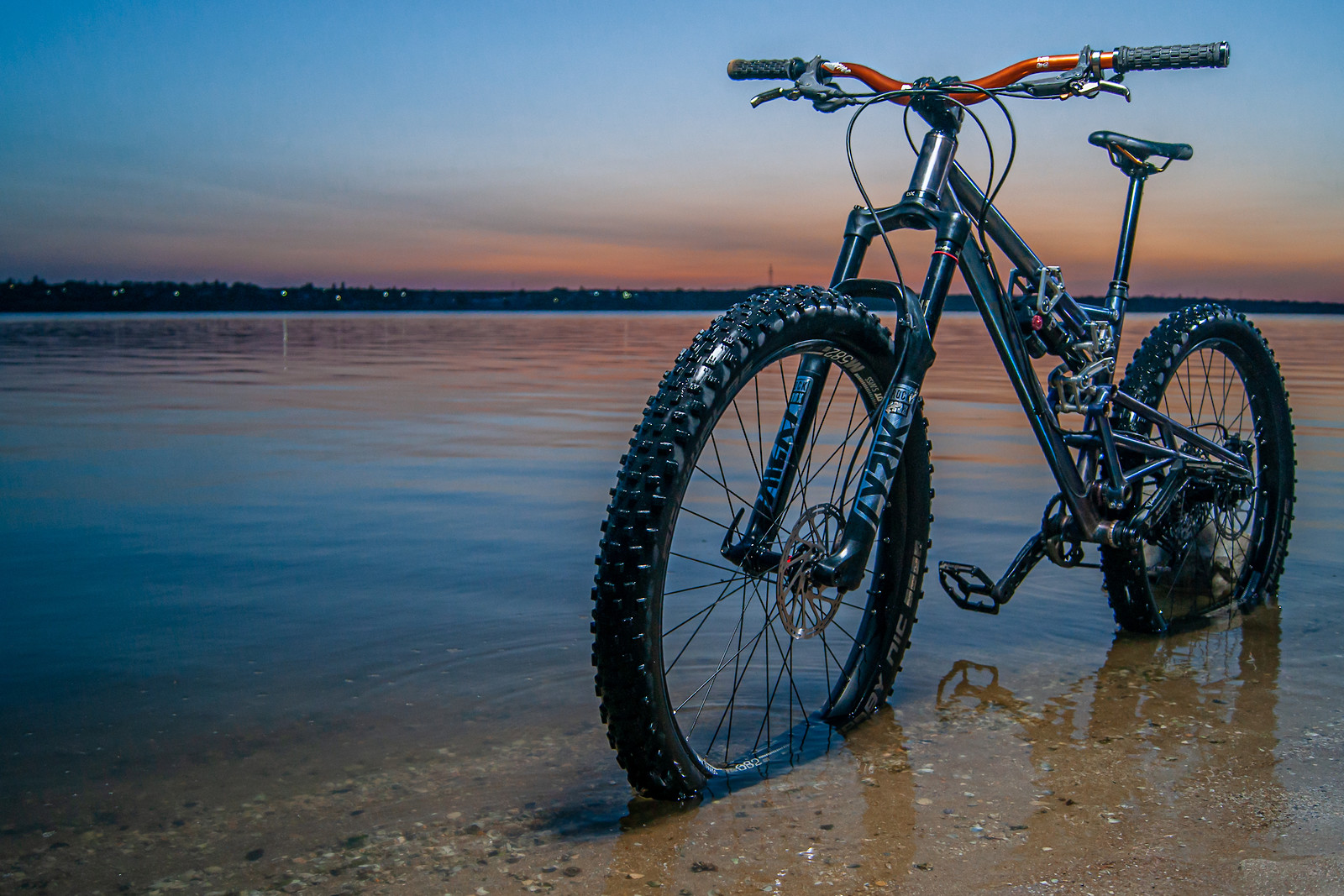




































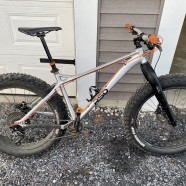

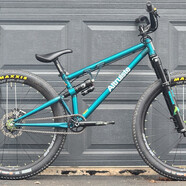
















View replies to: Elements r2r Stage2
Comments